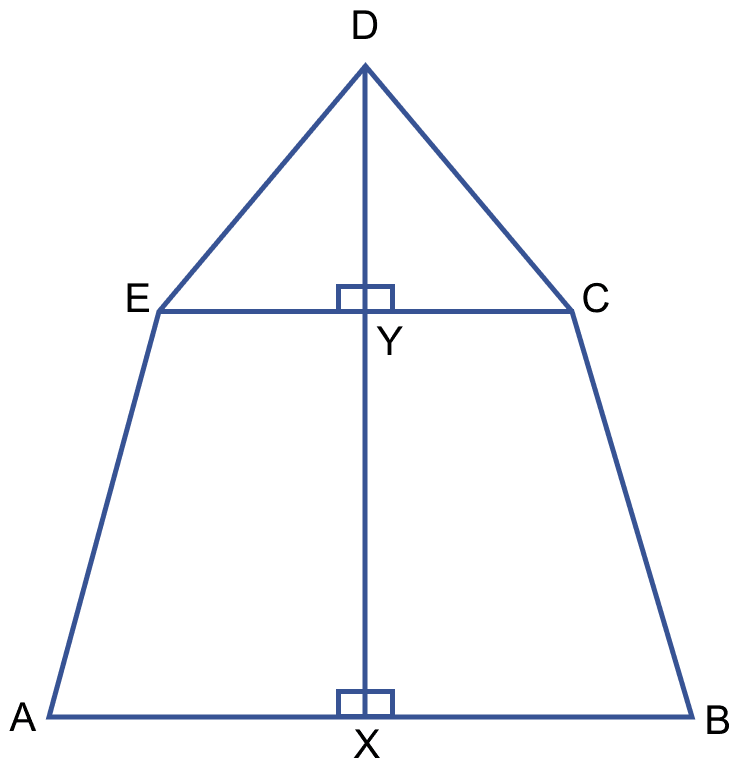Mathematics
Calculate the area of the pentagon ABCDE shown in fig (iii) below, given that AX = BX = 6 cm, EY = CY = 4 cm, DE = DC = 5 cm, DX = 9 cm and DX is perpendicular to EC and AB.

Mensuration
15 Likes
Answer
From figure,
In right angled △DEY,
⇒ DE2 = DY2 + EY2
⇒ 52 = DY2 + 42
⇒ DY2 = 52 - 42
⇒ DY2 = 25 - 16 = 9
⇒ DY = = 3 cm.
Area of right angled △DEY = × base × height
= × EY × DY
= × 4 × 3
= 6 cm2.
Area of right angle △DYC = × base × height
= × CY × DY
= × 4 × 3
= 6 cm2.
From figure,
XY = DX - DY = 9 - 3 = 6 cm.
Area of trapezium ECBA = (sum of parallel sides) × distance between them
= × (EC + AB) × XY
= × [(EY + CY) + (AX + BX)] × XY
= × [(4 + 4) + (6 + 6)] × 6
= × 20 × 6
= 60 cm2.
Area of pentagon = Area of right angled △DEY + Area of right angled △DYC + Area of trapezium ECBA
= 6 + 6 + 60
= 72 cm2.
Hence, area of trapezium = 72 cm2.
Answered By
10 Likes
Related Questions
The figure (i) given below shows the cross-section of the concrete structure with the measurements as given. Calculate the area of cross-section.

The figure (ii) given below shows a field with the measurements given in metres. Find the area of the field.

If the length and the breadth of a room are increased by 1 metre, the area is increased by 21 square metres. If the length is increased by 1 metre and breadth is decreased by 1 metre the area is decreased by 5 square metres. Find the perimeter of the room.
A triangle and a parallelogram have the same base and same area. If the sides of the triangle are 26 cm, 28 cm and 30 cm, and the parallelogram stands on the base 28 cm, find the height of the parallelogram.